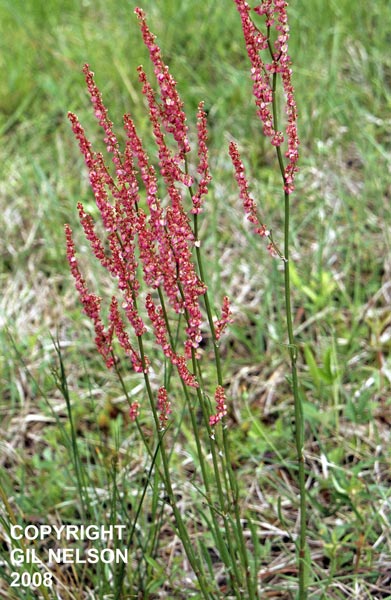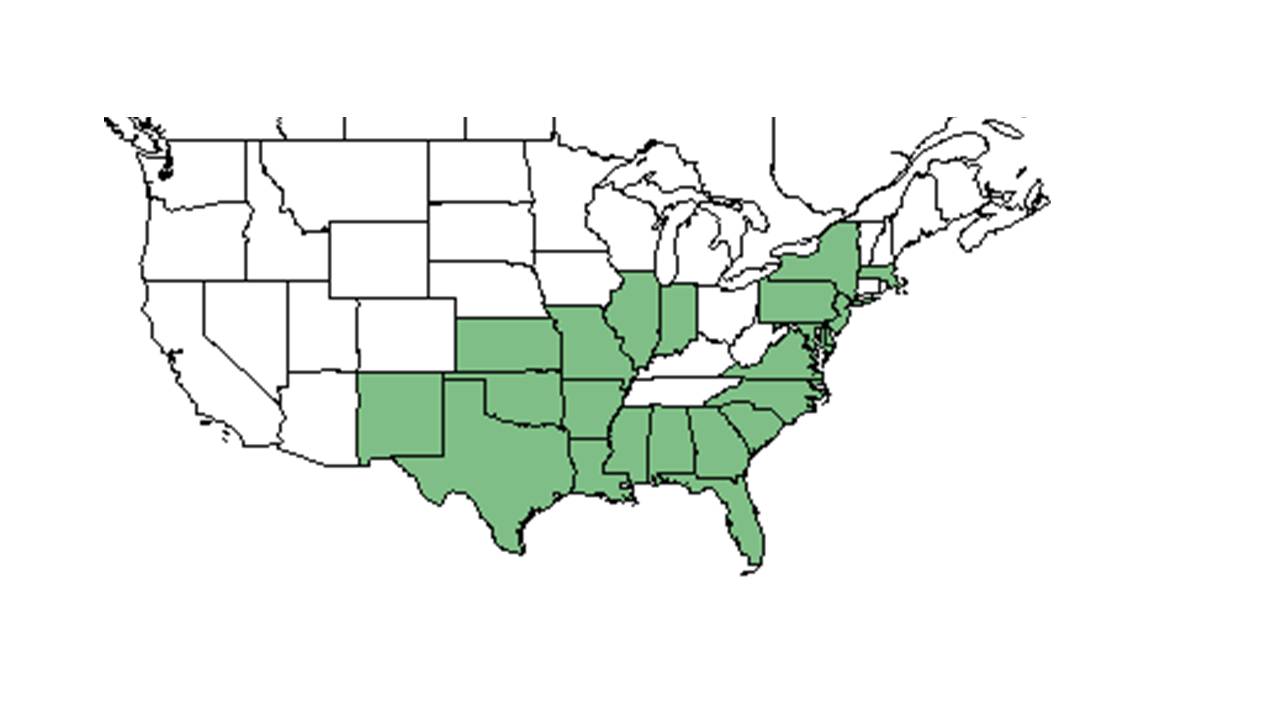Difference between revisions of "Rumex hastatulus"
(→Conservation and Management) |
|||
| Line 42: | Line 42: | ||
Heavily grazed by deer (FSU Herbarium). | Heavily grazed by deer (FSU Herbarium). | ||
<!--===Diseases and parasites===--> | <!--===Diseases and parasites===--> | ||
| − | ==Conservation and | + | ==Conservation and management== |
| + | |||
==Cultivation and restoration== | ==Cultivation and restoration== | ||
==Photo Gallery== | ==Photo Gallery== | ||
Revision as of 19:03, 6 July 2016
| Rumex hastatulus | |
|---|---|

| |
| Photo taken by Gil Nelson | |
| Scientific classification | |
| Kingdom: | Plantae |
| Division: | Magnoliophyta – Flowering plants |
| Class: | Magnoliopsida – Dicotyledons |
| Order: | Polygonales |
| Family: | Polygonaceae |
| Genus: | Rumex |
| Species: | R. hastatulus |
| Binomial name | |
| Rumex hastatulus Baldw. | |

| |
| Natural range of Rumex hastatulus from USDA NRCS Plants Database. | |
Common name: heartwing sorrel
Contents
Taxonomic notes
Synonym: Acetosa hastatula (Baldwin) Á. Löve
Description
A description of Rumex hastatulus is provided in The Flora of North America.
Distribution
Ecology
Habitat
R. hastatulus can be found in shortleaf pine-oak forests, back sides of foredunes, scrub edges, under magnolia islands in sand dune communities, sandy areas of upland mixed forests, mesic woodlands, rocky open woods, thickets, granite outcrops, upland sandhill pond basins (FSU Herbarium). It can also occur along roadsides, roadside depressions, recently tilled roadsides, lawns, open fields, recently cleared areas, swampy woodland clearings, cleared creek bottoms, sandy fallow fields, old biocontrol plots, and areas of frequently disturbed soils (FSU Herbarium). Soils include sand, sandy loam, and loamy sand (FSU Herbarium).
Associated species include Liatris, Panicum, Leptoloma cognatum, Trifolium, Vicia, Linaria, Cerastium and Viola (FSU Herbarium).
Phenology
Flowers and fruits in April (FSU Herbarium).
Use by animals
Heavily grazed by deer (FSU Herbarium).
Conservation and management
Cultivation and restoration
Photo Gallery
References and notes
Florida State University Robert K. Godfrey Herbarium database. URL: http://herbarium.bio.fsu.edu. Last accessed: July 2015. Collectors: C. J. Hansen, C. M. Morton, John W. Carter, Jr., John W. Thieret, Delzie Demaree, Sidney McDaniel, S. B. Jones, Carleen Jones, R L Lazor, Fred B Jones, R. Kral, A. R. Diamond, Loran C. Anderson, K. Craddock Burks, Robert K. Godfrey, Jean W. Wooten, John C. Ogden, Gary R. Knight, N. J. Summerlin, D. B. Ward, R. R. Smith, B. Moore, D. Burch, Luis Almodovar, L B Trott, M. Knott, J. P. Gillespie, H. E. Grelen, Grady W. Reinert, Richard S. Mitchell, D. Burch, E. M. Hodgson, Elmer C. Prichard, Harry E. Ahles, J. Haesloop, C. R. Bell, M. P. Burbanck, R. C. Darby, H. L. Blomquist, Andre F. Clewell, D. C. Hunt, R. F. Doren, Roy Komarek, Lisa Keppner. States and Counties: Alabama: Houston, Lee, Pike, Arkansas: Columbia, Pike. Florida: Bay, Bradford, Calhoun, Franklin, Gulf, Jackson, Jefferson, Lafayette, Leon, Levy, Liberty, Madison, Marion, Orange, Polk, Santa Rosa, St Johns, Taylor, Volusia, Wakulla, Walton, Washington. Georgia: Chattahoochee, DeKalb, Fulton, Grady, Marion. Louisiana: Ouachita, Rapides. Mississippi: Forrest, Jasper. North Carolina: Bladen, Chatham, Durham. South Carolina: Cherokee. Texas: Refugio, San Patricio, Van Zandt. Compiled by Tall Timbers Research Station and Land Conservancy.